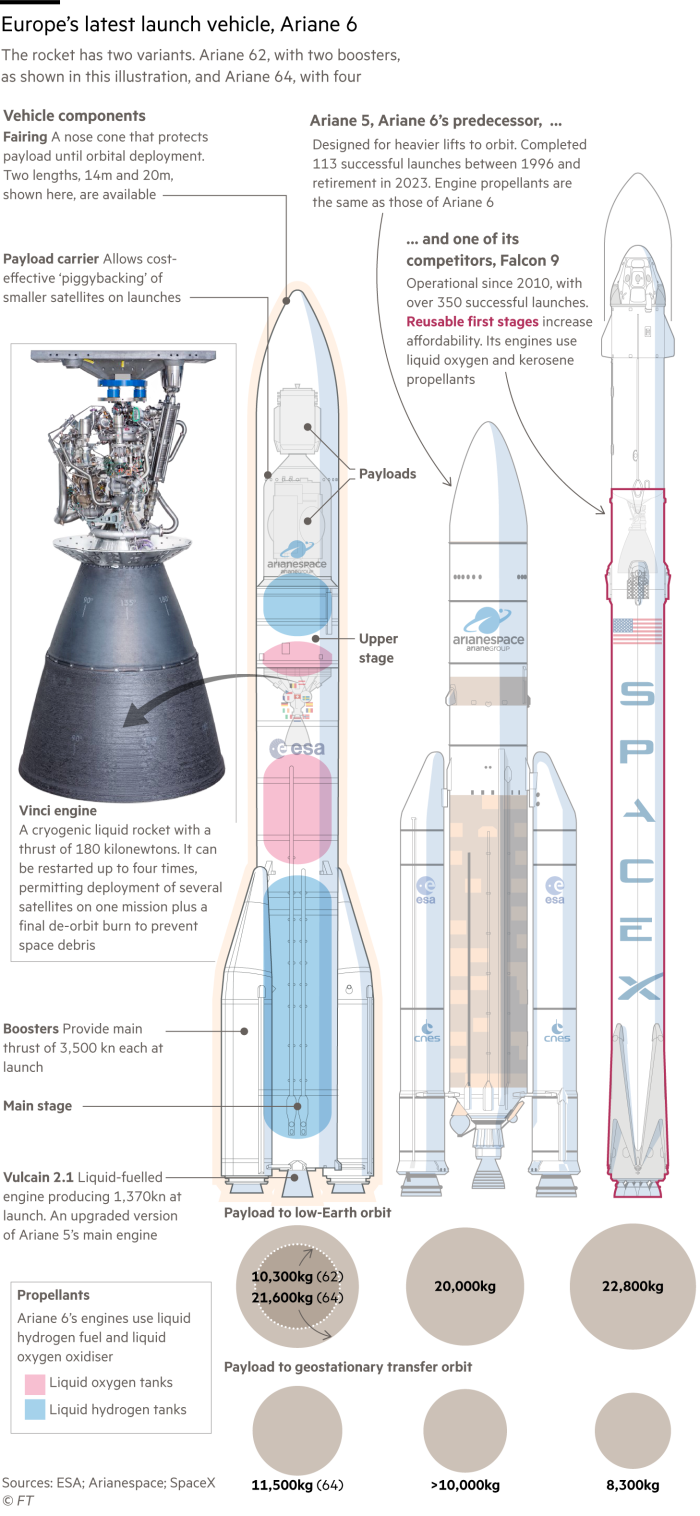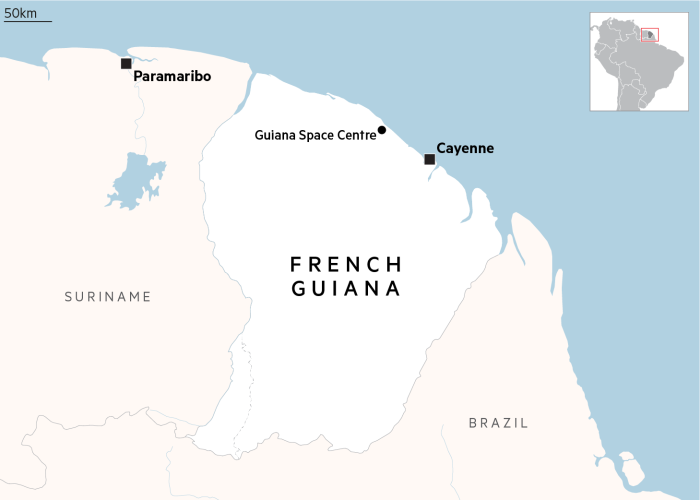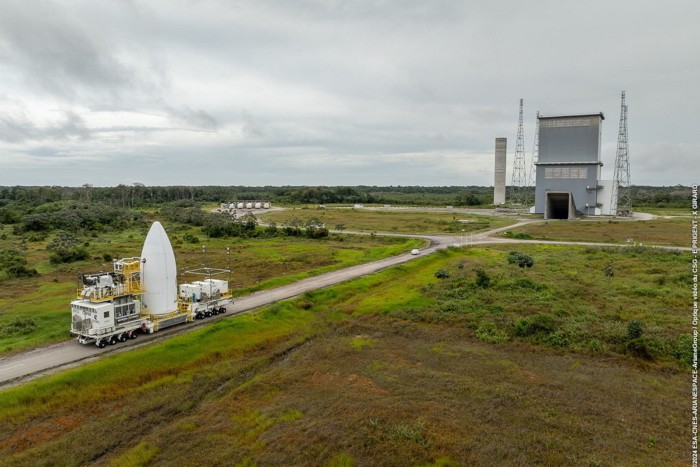On July 9, Anne-Sophie Chassagnou will judge whether the skies are clear enough for Europe to launch its first new rocket in nearly 30 years.
Aged only 26, the chief meteorologist of the first flight of Ariane 6 has considerable influence on the continent’s space ambitions. Last year, minutes before the rocket was due to launch, France’s CNES meteorologist canceled the first launch attempt of the 1.6 billion euro European mission to explore Jupiter’s icy moons.
“My body was shaking when I had to push the red button,” she said from Europe’s spaceport in French Guiana, between Brazil and Suriname. But if conditions aren’t right for Ariane 6, she won’t hesitate to do it again. “I don’t want to, but if I have to, I will,” she added.
This time, the stakes go far beyond a simple deep space mission. The first flight of the Ariane 6 rocket will test Europe’s ability to regain credibility in the commercial launch market, once dominated by Ariane 5 and now by Elon Musk’s SpaceX.
Europe is also counting on Ariane 6 to restore its independent access to space – an increasingly contested domain where the world’s superpowers are battling for economic and strategic supremacy. Last year, the bloc had to rely on SpaceX to launch some of its most sensitive satellites.

It’s an uncomfortable position. In the 1970s, the United States tried to block some European satellites from competing commercially in exchange for launch services. “The Ariane program was triggered by the lack of commercial access to space,” said Eric Dalbiès, president of ArianeGroup, the French joint venture that makes Europe’s Ariane heavy-lift rockets. “That rekindled the need for Europe to have sovereign access.”
Europe once again finds itself without launch capacity since the withdrawal of Ariane 5 last July. Technological challenges, pandemic lockdowns and labor shortages led to a costly four-year delay for Ariane 6. Cooperation with Russia ended after the invasion of Ukraine, and Problems on the new Italian Vega-C medium-sized launcher have left this rocket grounded since 2022.
Josef Aschbacher, director of the European Space Agency, called the situation a “crisis” for Europe. The EU’s new space strategy for security and defence has made restoring autonomous access to space a priority.
At the Guiana Space Centre, located near the coastal town of Kourou, teams from ESA, CNES and ArianeGroup have been working hard to achieve this goal.
In April, the rocket core was transferred to the launch pad and two boosters carrying 140 tons of solid propellant were attached to it. On June 20, Ariane 6 was refueled and emptied during the final rehearsal. Sixteen satellites and experiments were loaded onto the rocket.
According to Aschbacher, nearly 50 percent of rockets fail on their first flight, but Kourou officials hope that repeated testing and rehearsals will have mitigated the risks. The goal is to “do everything right the first time,” says Lucia Linares, ESA’s head of strategy.

Even if the first flight fails, Europe’s strategic needs will keep the program alive. It is less certain that the rocket can compete in a market that has changed radically since Europe opted in 2014 to build a conventional launcher.
SpaceX’s reusable Falcon 9 has seen its prices drop, making it the undisputed leader in reliable, low-cost launches. This week, the EU weather satellite operator opted to launch its next spacecraft on SpaceX, rather than wait for Ariane 6. SpaceX expects Starship, the world’s most powerful rocket, which made its fourth test flight this month, also reusable, unlike Ariane 6.
Europe’s decision not to invest in a reusable rocket is widely seen as a mistake. Germany was reluctant to fund a new rocket program, according to former ESA chief Jan Wörner. “The German idea was to continue with Ariane 5 but with a new upper stage. It was the cheapest solution,” he said.
But France, which has long dominated the European launcher industry, wanted to retain rocket-making jobs and skills with a new programme.

A compromise was found. ArianeGroup, resulting from the merger of the Franco-German rocket activities Airbus and Safran, has committed to designing a disposable launcher which would cost at least 50% less to operate than Ariane 5, which would fly in five years and which would require no grant, Wörner said. The program has not kept its promises on all these points.
Last fall, ESA member states agreed to inject an additional 1 billion euros, on top of an estimated development cost of 4 billion euros, to allow Ariane 6 to compete with SpaceX.
Some experts defend the European decision to reject reuse in favor of a non-reusable launcher with a very flexible upper stage, capable of taking satellites into different orbits during a single mission. A reusable rocket would have required significant, sustained demand that was not available, they argue.
“It was the right decision,” Linares said. “It’s true that if you reuse the first floor… normally you reduce the cost. But it depends on how many times you can perform the launch. »
Yet even for a conventional rocket, demand matters, and Ariane 6 is entering a more difficult commercial market than its predecessor.
According to Novaspace analysts, the United States will launch about three times as many satellites as Europe over the next decade for governments, universities and other institutions, and nearly ten times as many commercial spacecraft. The Pentagon, NASA and Elon Musk’s Starlink high-speed satellite service are likely to turn to SpaceX before Ariane.

Meanwhile, many launcher startups around the world are eyeing the booming market for low-orbit satellite services.
“Ariane previously launched two non-institutional satellites for each institutional satellite. But today, new launchers are meeting this demand,” said Pierre Lionnet, head of research at the professional body ASD-Eurospace.
Novaspace estimates that some 2,800 satellites will be launched each year until 2033. Much of this activity will be covered by domestic launchers, but Linares believes that a sufficient number of satellites will still be open to competition – and the flexibility to ‘Ariane will be an advantage.
Ariane 6 is already booked for 30 launches, including 18 for Amazon’s upcoming Project Kuiper high-throughput constellation. Customers want a diversity of launch providers beyond SpaceX, Linares said.
But even those involved in the European programme acknowledge that the system that gave birth to Ariane 6 – which awards supply contracts based on nationality rather than competitiveness – will have to change. This year, ESA launched a competition for the development of small commercial launchers, from which it will buy services.
The decision was an “electroshock” in the face of the complacency of businesses and politicians that had hampered the launch of Ariane 6, said a source close to the matter.
However, the high price of a heavy rocket means Europe cannot avoid collaboration and compromise, which could further hamper its competitiveness.
“I am not convinced that we will be able to offer launch services in Europe at prices as low as those of SpaceX,” said Carine Leveau, head of space transportation systems at CNES. “But we can be more competitive than today and we will be with Ariane 6.”
But for now, the priority is to guarantee Europe’s access to space. “It is very important that this maiden flight is a success,” she added. “This will reassure everyone.”
Illustration by Ian Bott